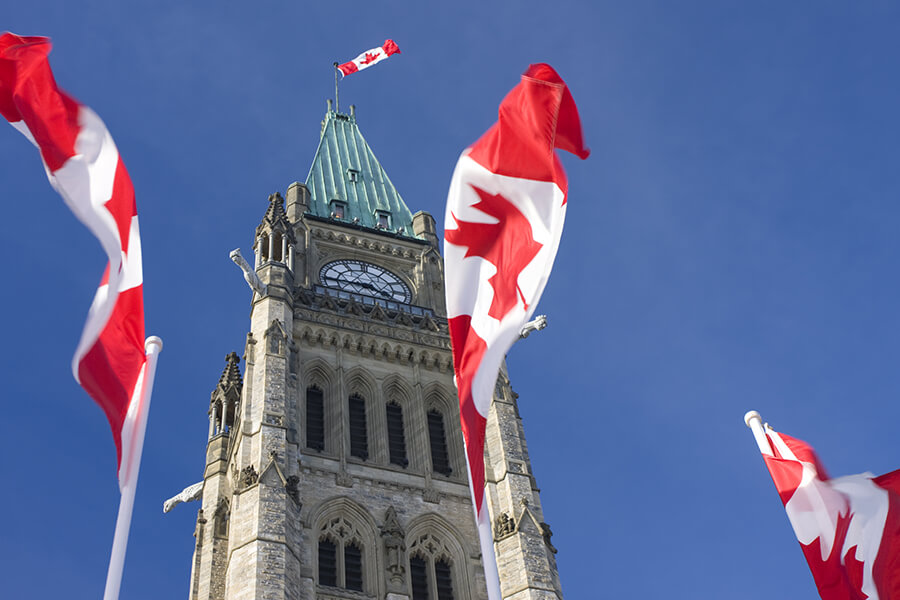This op-ed was originally published by iPolitics on April 20, 2021.
Finance Minister Chrystia Freeland’s inaugural budget is intended to transform the economy by favouring vaccine rollouts and economic recovery in the near term and focusing on the labour force, green technology, and education over the long-term. While good intentioned, the fiscal roadmap outlined by the Liberal government will come at a cost to Canadians.
The plan is clearly to get through the pandemic crisis by extending the massive support programs to households and businesses that were introduced last year and then focus on measures intended to lift economic growth in years to come. The plan is extremely costly though as it is financed almost entirely with debt. COVID-19 has already added massive amounts to our national debt and the new fiscal anchor seems to be to hold the debt-to-GDP ratio steady at very risky levels.
Good news comes from an improved economic outlook. Despite ongoing shutdowns, Canada’s economy has been more resilient than expected. This has bolstered government revenues significantly above expectations set in last November’s Economic Update.
The plan is clearly to get through the pandemic crisis by extending the massive support programs to households and businesses that were introduced last year and then focus on measures intended to lift economic growth in years to come. The plan is extremely costly though as it is financed almost entirely with debt.
But new spending measures have outpaced these gains. Deficits over 2020–21 and 2021–22 will total $509 billion, slightly above what was expected last fall. And over the following four years, deficits will persist—easing from $59.7 billion in 2022–23 to $30.7 billion in 2025–26 (over 1.1 per cent of GDP in that year).
While the economic outlook is positive, a successful rollout of vaccines is critical to allowing the economy to fully reopen, something that is expected to happen in the second half of this year. Until then, COVID-19 continues to take a toll on many sectors of the economy. To counter this, Budget 2021 includes massive spending on a multitude of near-term initiatives. Over $32 billion is committed to help households and businesses get through the crisis, with major outlays to extend the wage subsidy program and maintain generous employment insurance benefits until September.
Over the longer-term, initiatives are numerous, but daycare is the centerpiece of the budget. Close to $30 billion is committed over the budget’s planning horizon—starting at $3.1 billion in 2021/22 and ramping up to $8.4 billion in 2025–26, with ongoing spending of $9.0 billion per year or more thereafter. The intent is to bring $10 a day care to all parents. This is a worthy initiative and there is evidence of the economic benefits, much of it referencing Quebec’s success with a provincial daycare program.
The transfers are generous and should entice provinces to come on board with the national daycare program, but the details of the agreement need to be worked out. Most provinces are cash strapped and dealing with the growing burden of healthcare. Interestingly, the budget offered no permanent increases on health transfers outside of a $4 billion increase in 2020–21.
Education, reskilling, and retraining is another important long-term focus of the budget. The pandemic has had an overbearing impact on young people, women, and low-wage workers. In March 2021, an additional 291,000 Canadians joined the ranks of the long-term unemployed, most of them youth aged 15 to 24. And this may not be temporary as the COVID-19 pandemic will have lasting impacts on the economy. Budget 2021 sets aside $7.5 billion over five years for education and retraining.
Overall, Budget 2021 is massive and extensive—with programs and spending that will, no doubt, address many of the issues that concern Canadians. However, Budget 2021 also takes us down a path of permanent increases to spending, with only modest revenue measures in the plan.
For businesses, Budget 2021 broadly focuses on providing investment incentives and support for technology adoption. There is also a hiring incentive and additional funds for aerospace and life sciences; a fund for research, innovation and entrepreneurs; and new spending on green infrastructure and broadband internet. In total, $16.3 billion is committed to these initiatives.
Budget 2021 includes many other spending initiatives that are focussed on improving outcomes for disadvantaged Canadians. These include more generous Old Age Security ($11.3 billion over the budget planning period); the enhanced Canada Workers Benefit ($9 billion); money for communities, including affordable housing ($17.4 billion) and money for indigenous communities ($15.2 billion).
Overall, Budget 2021 is massive and extensive—with programs and spending that will, no doubt, address many of the issues that concern Canadians. However, Budget 2021 also takes us down a path of permanent increases to spending, with only modest revenue measures in the plan. The federal debt-to-GDP ratio will stabilize at roughly 50 per cent, fully 20 percentage points above the pre-pandemic level.
While Budget 2021 demonstrates that the situation is sustainable for the federal government, provinces and territories are also suffering from massive deficits and large additions to their debt levels. As such, Canadian taxpayers may well face higher taxes or spending restraints at the provincial level. Moreover, high debt levels leave governments vulnerable to higher-than-expected interest rates or future economic shocks. Let’s hope that neither are in the cards anytime soon.



Comments